MuscleSport Multi Vita Revolution
$34.95
Have you ever noticed that talking about dieting or calorie-restriction is similar to a beacon for some nutritionist or dietitian to swoop in and remind you all about how foods have vitamins and minerals and how multivitamins “just aren’t the same?” Have you also noticed that people who make a big deal out of vitamins and minerals from food sources also tend to be overweight? That’s because these individuals have overemphasized the micronutrients relative to the macronutrients and calories. Of course, vitamins and minerals are very important, but it’s not exactly difficult to see the error in justifying eating pizza solely because it has B vitamins in the crust. Multi Vita Revolution is a better way.
Description
Micronutrients – A full spectrum of vitamins and minerals to optimize health and keep the body in tip-top condition.
Fruits & Greens Whole Food Complex – Packed chock full of phytonutrients to get you all the benefits of the whole plant, not just the vitamins and minerals.
Antioxidant Complex – Free radicals wreak havoc in the body. Ingredients like MSM, Green Tea, and Grape Seed stop them dead in their tracks.
Advanced Enzyme Blend – A specialized mixture of enzymes facilitate the proper digestion of foods to help get more nutrients out of the digestive tract and into the body!
Whole foods have tons of benefits, but the notion that vitamins and minerals from food are better than from a multivitamin is hogwash.
They are the same, but food has OTHER stuff. In every case, calories are present, but things like phytonutrients are beneficial and found in vegetables, so MSI has added those to Multi Vita Revolution as well!
Long story short, Multi Vita Revolution has all of what you need and none of what you don’t!
Get your vitamins, your minerals, your phytonutrients, and all those other helpful phytonutrients found in food. Ditch the excess Calories. Get Multi Vita Revolution – the Best Multivitamin in Sport!
Vitamin A
Vitamin A is principally found in animal products such as meat, eggs, fish, and dairy as retinol. Provitamin A, carotenoids, are found in orange-colored plants – usually as beta-carotene, but there are over 600 known carotenoids.
Supports normal vision.
Helps with collagen formation for strong connective tissues and smooth skin.
Essential for reproduction by stimulating spermatogenesis, oogenesis, and embryonic growth.
Antioxidant within the cell membrane.
Vitamin C
Vitamin C is the classic immunity vitamin. However, this is just one of Vitamin C’s many important roles in the human body.
Supports a healthy immune system, ensuring the best protection from colds.
Can speed the recovery from colds in athletes.
Helps in the formation of cartilage, bones, and teeth.
Protects the body from free radicals.
Vitamin D
The sunshine vitamin is well known for its role in bone health, and as is so often the case, it does much more. Vitamin D has numerous vital roles.
Aids in calcium absorption and reduction of falls for improved bone health.
Vitamin D metabolites strengthen muscle contractions
May help maintain normal blood pressure.
Improves mood and nervous system health.
May support a healthy appetite.
Enhances sex-hormone synthesis.
Vitamin E
The tocoperhols (vitamin E) may be the most potent of the antioxidant vitamins.
Powerful antioxidant.
A cell signal that helps regulate the growth of smooth muscle.
May help prevent infertility and atherogenesis.
Thiamin
Thiamin and the other B vitamins have a major role in metabolism and energy production.
Facilitates conversion of pyruvate to acetyl-CoA for efficient energy metabolism.
Helps with the metabolism of non-traditional sugars, such as ribose.
Supports the health and function of neurons.
Riboflavin
Riboflavin (vitamin B2) forms flavin adenine dinucleotide (FAD), which along with NAD, moves back and forth through the mitochondrial membrane to form ATP.
Can help with skin, hair, and nail health.
Aids in red blood cell formation.
May prevent muscle cramps.
Niacin
Similar to riboflavin and FAD, niacin (vitamin B3) is required to form nicotinamide adenine dinucleotide (NAD). NAD performs the same function as FAD and may also play a role in normal aging.
Improves blood flow and vascularization.
Vitamin B6
Like the other B’s, B6 is heavily involved in energy metabolism. It is a cofactor in over 100 reactions, many of which within the muscle, where it helps with glycogen utilization.
Enhances muscle glycogen access and use.
Supports brain development and function.
Vitamin B12
Cobalamin (B12) may be the most popular of the B vitamins. Indeed, B12 does help with energy as well as oxygen transport and nervous system function.
In B12-deficient athletes and ill persons, supplementation with B12 enhances endurance.
Involved in the replication of DNA.
Biotin
Biotin is also known as vitamin B7. Similar to other B vitamins, it is involved in glucose metabolism. Biotin also helps in protein and amino acid metabolism.
Helps to produce amino acids.
Plays a role in glycogen synthesis.
Forms intermediate compounds in the tricarboxylic acid cycle.
Pantothenic Acid
Pantothenic acid (B5) is one of the cooler B vitamins. Its main function is in the rate limiting step in coenzyme-A formation (as in acetyl-CoA – gateway to aerobic metabolism).
Supports proper adrenal function.
May reduce perceptions of stress.
Vitamin K
Vitamin K can principally be found in two forms, phylloquinone or menaquinone. Most known for blood clotting, vitamin K has several functions throughout the body.
Improves bone health by facilitating calcium and osteocalcin binding.
Strengthens teeth by aiding in the production of dentin.
Folic Acid
Folic acid, or folate, is the fetal vitamin (vitamin B9). Despite being known for healthy babies, folate has at least a dozen other functions. Here are a few:
Reduces incidence of neural tube defects during embryonic development.
Low folate levels are correlated with liver damage.
Boron
Boron is a mineral that may help with muscle growth. Interestingly, boron is also essential for plant growth. Weird! It’s good for humans too.
May increase free testosterone to aid in muscle growth.
Plays a key role in bone growth and wound healing.
Can prevent vitamin D deficiency.
Calcium
Calcium is a common customer in milk and other dairy products. It’s one of the reasons milk is so effective for helping build muscle.
A signal for muscle contractions lasting longer than 20 seconds.
The major component of bones.
One of the primary electrolyte minerals.
Phosphorus
Phosphorus is another mineral essential for bone health, like calcium and vitamin D, but it doesn’t get as much love. In addition, phosphorus has a good deal of other functions.
Form high-energy molecules like ATP.
A component of DNA and RNA.
Supports healthy bones.
Iodine
Iodine is a key weight-loss mineral. At one time, most people were deficient in iodine, which is why we now have iodized salt. However, as more people turn to natural salts, iodine deficiencies are becoming a problem once again.
Forms thyroid hormones that stimulate fat loss.
Improves cognitive functioning.
Can reduce the severity of thyroid cancers.
Magnesium
Magnesium is involved in over 300 reactions throughout the body. Most of these reactions are tied to athletic performance in at least one way.
Magnesium participates in processes that generate ATP
Involved in protein synthesis.
Helps with muscle contractions.
Increases total work output.
Supplementation enhances endurance and peak oxygen consumption.
Zinc4
Supplemental zinc has benefits that extend far beyond what can be contained in a single summary. Here are some of the highlights.
Improves sleep quality.
Enhances mitochondrial function, which may improve endurance.
Prevents exercise-induced decreases in thyroid hormones and testosterone – very important for hard-training athletes.
Selenium
This mineral is most abundant in Brazil nuts – just one brazil nut has a whole day’s worth of selenium and then some! That’s good news, as selenium has a pronounced role in good health and exercise recovery.
Important for thyroid function and body weight regulation.
May increase testosterone and IGF-1
Can help with carbohydrate metabolism.
Copper
Copper has a number of interactions with another popular mineral, iron. They work together principally to foster iron’s purposes, but copper has a few of its own unique properties.
May support healthy brain function.
Supports well being.
Supports reductions in oxidative stress and cardiovascular health.
Manganese
Similar in name and in function, manganese often can stand in for magnesium in metabolic reactions due to comparable coordination and charge. Some of manganese’s unique functions include:
Forming the most abundant antioxidant in mitochondria, manganese superoxide dismutase.
Producing enzymes and proteoglycans for healthy bones and joints.
Involved in glutamine synthesis.
Chromium
Chromium may have the most superhero of names, which extends so far as to be implicated for the prevention of “syndrome X.” Its functions are pretty super too.
Increases carbohydrate metabolism and glucose disposal.
May support healthy blood lipid levels.
Supplementation may increase muscle gains while decreasing body fat.
Fruits & Greens
Fruits and vegetables are an essential component of a healthy diet, and they are one of the few examples of a “more is better” approach that does not lead to overconsumption detriments.
Over 10 different plant-based ingredients provide phytochemical sustenance.
Contains powerful antioxidants.
High fruit and vegetable consumption decreases all-cause mortality.
MSM
Otherwise known as methylsulfonylmethane, MSM is an antioxidant and anti-inflammatory agent with roles in joint health as a source of sulfur.
Reduces exercise-induced oxidation.
May decrease muscle damage.
Studies have found patients to experienced reduced joint discomfort with MSM supplementation.
Green Tea
Green tea contains the powerful antioxidant EGCG and other catechins that have been observed to have several beneficial effects on health and body composition.
May reduce body fat mass.
Increases fat oxidation.
Alpha Lipoic Acid
Alpha-Lipoic Acid (ALA) is a potent antioxidant in the mitochondria that offers protection to several organs as well as reducing the potential for aging from dysfunctional mitochondria.
Reduces general oxidation within the body.
Enhances blood flow.
May improve nervous system function and neurogenesis.
Coenzyme Q10
CoQ10 is a very heart-friendly antioxidant. It has a role in ATP generation along the electron transport chain of the mitochondria.
A recent investigation on CoQ10 supplementation for four years reduced cardiovascular disease mortality. A follow-up 12 years later found that although supplementation was discontinued, patients were still experiencing benefits and living longer.
Reduces lipid peroxidation.
May enhance exercise capacity.
Pycnogenol
Pycnogenol is pine bark extract (specifically, French maritime pine bark extract) that is mostly procyanidins (such as in blueberries). Despite sounding relatively ordinary, pycnogenol is one of the most interesting supplements available.
Increases blood flow in clinical and healthy persons and supports venous insufficiency.
Improves attention and cognition.
Fosters good skin health and quality.
Promotes healthy cholesterol levels.
Prevents symptoms of jet lag.
Grape Seed Extract
Grape seed is another with procyanidins, but it also contains tannins – another phytonutrient.
May decrease aromatase, decreasing the conversion of testosterone to estrogen.
Helps with appetite regulation.
Supports a healthy cardiovascular system.
Saw Palmetto Extract
Saw palmetto is an ingredient derived from Serenoa Repens fruit with a particularly prominent role in men’s health.
Promotes a healthy prostate.
May reduce the conversion of testosterone to DHT.
Enhances hair regrowth in male pattern baldness, sexual function, and quality of life.
Lutein
Lutein is a carotenoid, or provitamin for vitamin A. High concentrations are found in eggs, and provide much of the foods function as an antioxidant and proponent of eye health.
Supports proper vision.
Antioxidant effects.
May protect against chronic disease.
Piperine
Piperine is an extract of black pepper fruit that works well in conjunction with other supplements.
Prevents supplements from attacking enzymes
Promotes absorption.
Advanced Enzyme Blend (protease, amylase, lipase, cellulase, lactase, betaine)
Digestive enzymes increase the digestion and absorption of nutrients while also reducing potential adverse reactions.
Inclusion of lactase may increase tolerance to lactose.
Protease and betaine facilitate protein and amino acid digestion.
Amylase, lipase, cellulase, and lactase promote carbohydrate and lipid digestion.

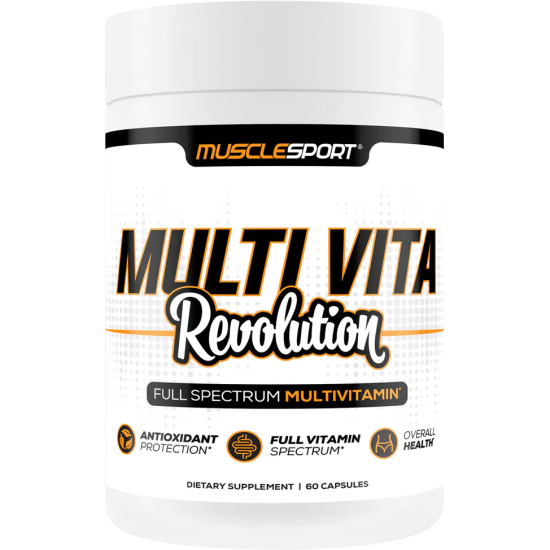
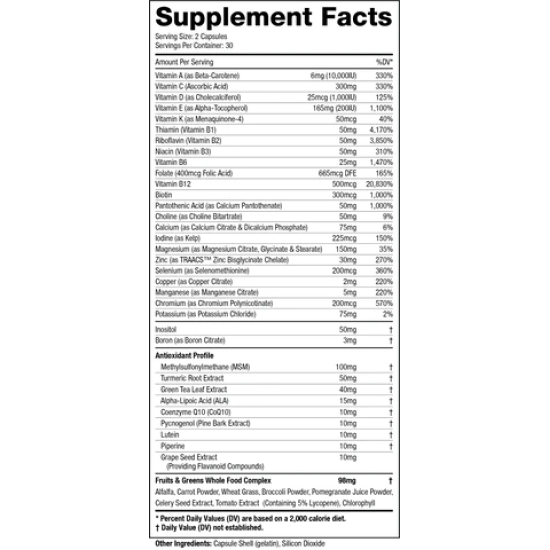
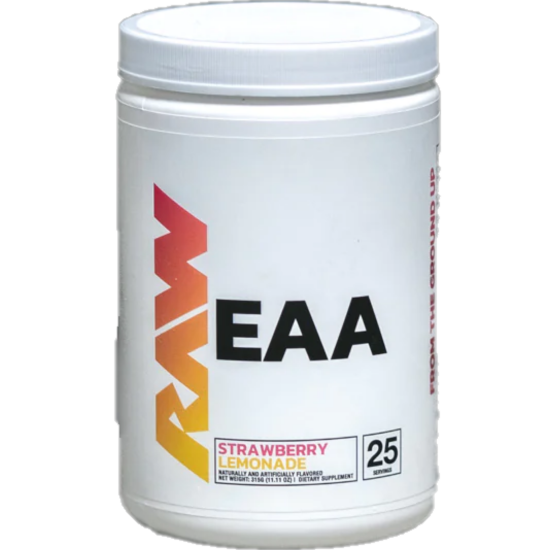
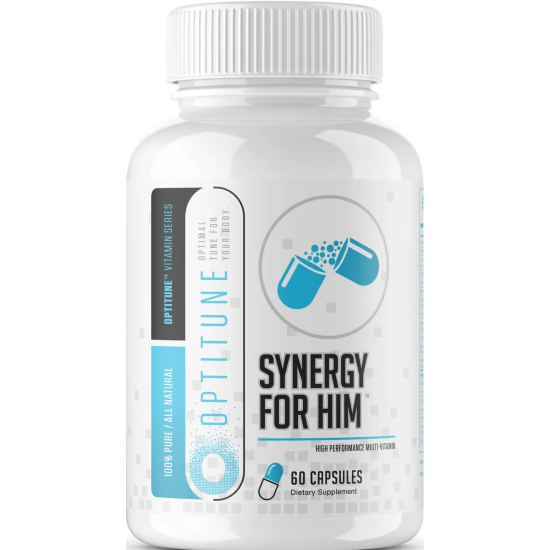
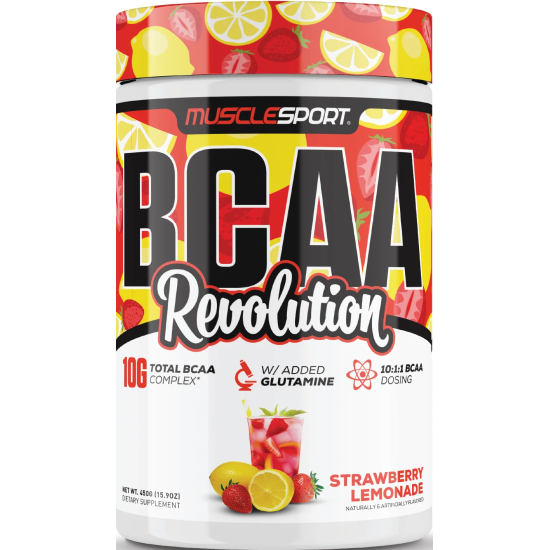
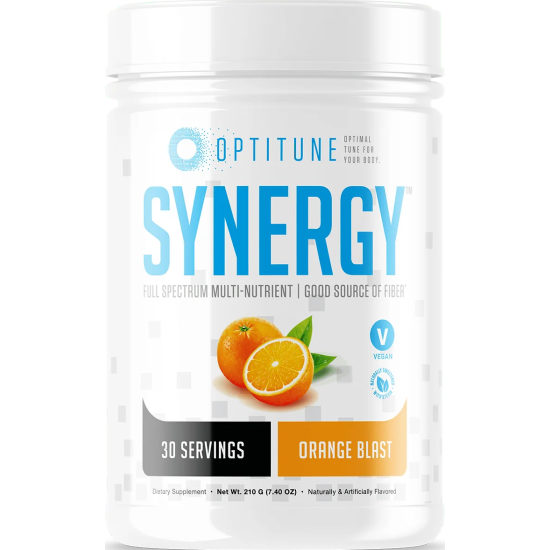
Reviews
There are no reviews yet.